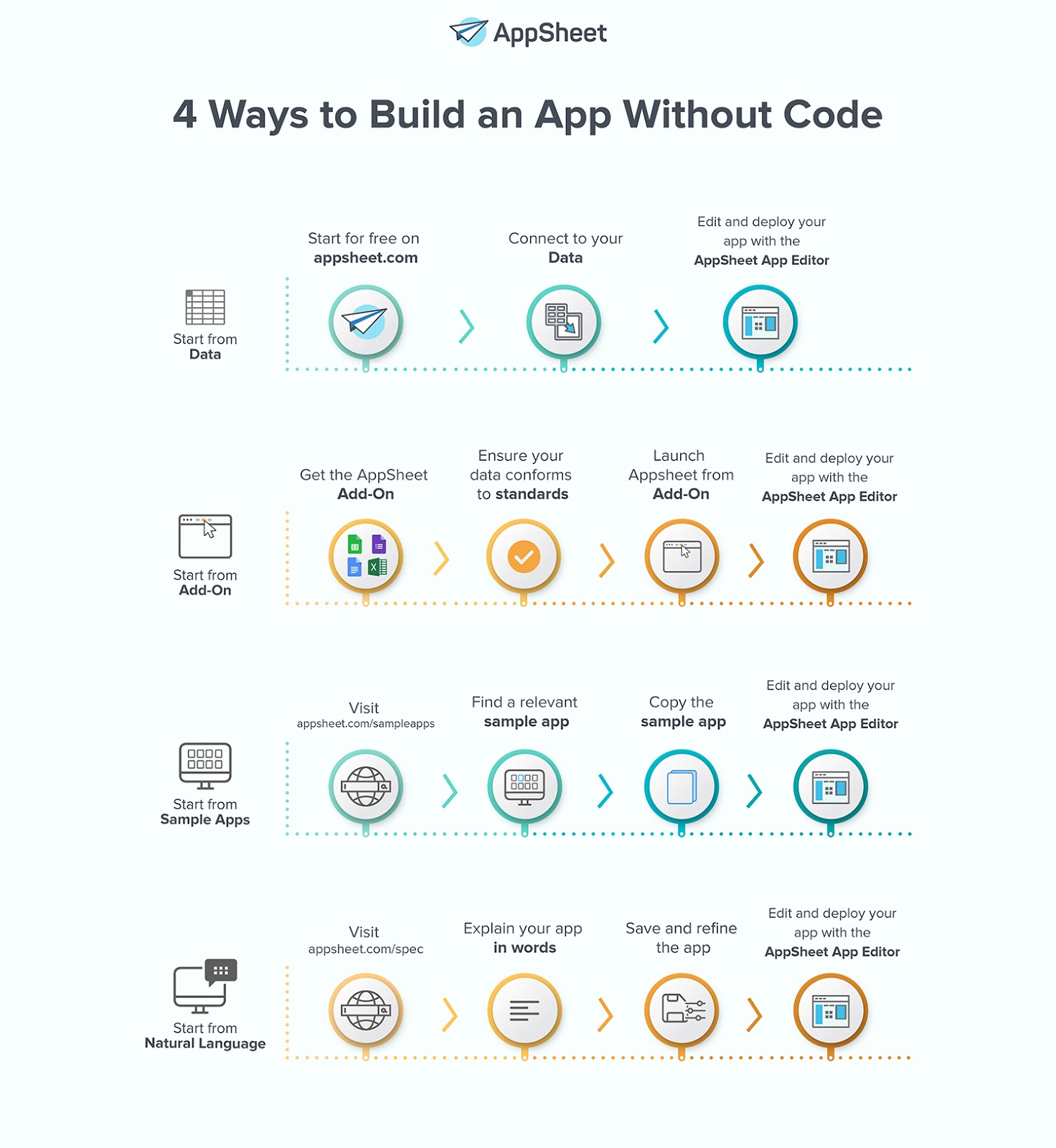While a lot of us have been taking the Apple trademarked slogan (“there’s an app for that”) for granted, some of us have been fighting for the app we really want for a long time. If you are in field services, construction, manufacturing, or other fields where you don’t spend most of your day at a desk, then you’ve been stuck with mass designed apps that support business processes for the masses.
Sure, you can have a map and a list of tasks that you need to complete for the day. Yes, you can submit that request. No, we can’t add a status field next to the property name. No, you’ll have to wait to submit that status report until you get back in range of cell service. If you’ve been waiting then you know how all of that feels.
Enter, AppSheet – the no code app builder for the majority of the workforce.
WE KNOW WHAT DATA WE WANT TO USE
Even though AppSheet launched in 2014, they have been on this road for a long time. The founders, a duo of developer masterminds, were talking to customers of their app development business about the challenges specific to their verticals. Every conversation and subsequent project drove the team toward a spreadsheet with a data model of sorts that they’d need to build from.
After so many cycles of this, the pair of developer founders were able to see clearly that so many businesses want to build and customize their own applications. They’ve been doing it with spreadsheets their entire professional career. They just don’t know how to write the front end code to query the database they want to use.
NOW WE CAN CREATE THE EXPERIENCE WE WANT FOR OUR WORKFORCE
Launching in late 2014, AppSheet launched a platform aimed at solving that problem. Today, after customers have deployed over one million apps, AppSheet is taking the no code app development tribe to the next level. “Natural language and machine learning are going to do more for no code app development than we think,” Santiago Uribe, VP Product at AppSheet explained, “[it] can do more than provide new sources of data, we can actually use it to simplify the development experience for the non-technical app developers.”
Santiago was able to show NoCodeDev an example of this during our interview. Simply by typing in a description of what I wanted the app to do, I was presented with a list of features and data that I could choose from to start building my app. I found it easiest to think of the new interface as a requirements gathering exercise. Simply by listing my requirements, the AppSheet platform was able to guess and subsequently pull together an app with my selected data definitions and features. Starting an app this way is just one of four options for building an app without code that AppSheet provides.
FOUR WAYS TO BUILD AN APP WITHOUT CODE

From the four methods of no code app development outlined in the graphic above, you’ll see an evolution from the problem of putting a mobile app on top of a spreadsheet. Today, AppSheet supports even more complex app definitions that pull data from multiple data sources. You can have your dispatch team working from their desk in a browser supporting a team of field or floor workers with mobile apps on their tablets or phones. Their Business (or what we’d consider “Enterprise”) plan adds even more ready to run components to help IT teams manage system performance, security, and out of the box connectors to popular systems of record.
Here is a quick minute on what it takes to start using the basic features of AppSheet today:
We are excited to see what AppSheet has in store for 2019 as they build on principles of simple no code app development. If you want to get a better idea of what you can build with AppSheet, go check out their sample apps. If you want to talk about AppSheet as an option for your organization compared to other tools or platforms, then drop us a line.


